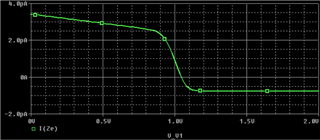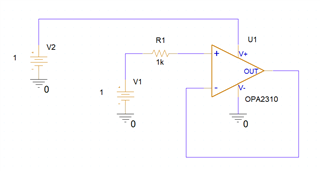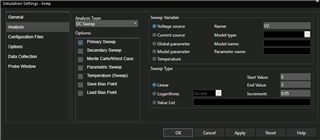Other Parts Discussed in Thread: TLV2262, TLV9062, OPA2310, OPA2323
Hello,
I am designing a circuit to measure the voltage of a glass electrode sensor which has a very high output impedance (>100Meg). Most opamps have an even higher input impedance (>10G) so this isn't a problem at first sight. Given some other design constraints I went for the TLV9064 which worked great in my initial testing.
However when I cut power to the circuit, the input impedance of this specific opamp drops significantly, which puts a lot of load/wear on the glass electrode sensor, especially its electrolyte, which will greatly reduce its lifespan. When given power again to the circuit the sensor takes a long time to recover as well (tens of minutes). This isn't the case for all opamps, but this unusual spec is rarely mentioned in any datasheets. For example I have another design around the MCP6022 which maintains its input impedance even when not powered.
My quesiton: What other opamp can I pick instead of the TLV9064 which is also available in VSSOP package and doesn't have this issue ? This could avoid any pcb changes...
Here are some additional thoughts for anyone interested in this issue:
I tried to replicate this in simulation by performing a DC sweep on the supply voltage. These are the results :
Simulation Schematic (tested with Ze 1k and 100Meg)

TLV9064 input current (V+) vs. VCC sweep - Ze=1k
I didn't have the spice model for the MCP6022, but I found the TLV2262 (not available in VSSOP sadly) which doesn't seem to suffer from this issue (although this might also be the simulation model just not being accurate in this edge case ?).
For such old parts the equivalent schematic is provided in the datasheet, but for the newer TLV9064 this is sadly not the case. This makes it hard to understand the input stage architecture and identify what specific input stage type might fit my requirements.

TLV2262 input current (V+) vs. VCC sweep - Ze=1k
Regards,






